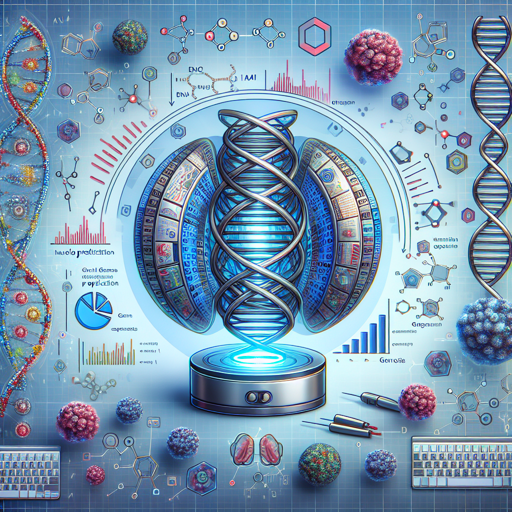Welcome to your guide on understanding and using the Nucleotide Transformer model. If you’re diving into the world of genomics and AI, the nucleotide-transformer-500m-human-ref model developed by InstaDeep, NVIDIA, and TUM is an essential tool for molecular phenotype prediction. This model leverages a wealth of DNA sequences, making it a powerhouse for accurate genomic analysis.
What’s Unique About the Nucleotide Transformer?
The Nucleotide Transformer models are akin to well-trained linguists fluent in the language of DNA. Just as a linguist understands nuances from various dialects by studying a vast number of texts, our models are trained on numerous DNA sequences from over 3,200 human genomes and 850 genomes from other species. This extensive training gradient allows for the detailed prediction of molecular phenotypes, surpassing previous methods in accuracy.
How to Set Up and Use the Model
Now, let’s embark on the journey of using this remarkable model! Follow these steps to get started:
Step 1: Install Transformers Library
To use the nucleotide transformer model, first, ensure the transformers library is installed from source:
pip install --upgrade git+https://github.com/huggingface/transformers.gitStep 2: Load the Pre-trained Model
Next, use the following code snippet to load your desired model and prepare to analyze your DNA sequences:
from transformers import AutoTokenizer, AutoModelForMaskedLM
import torch
# Load the tokenizer and model
tokenizer = AutoTokenizer.from_pretrained("InstaDeepAI/nucleotide-transformer-500m-human-ref")
model = AutoModelForMaskedLM.from_pretrained("InstaDeepAI/nucleotide-transformer-500m-human-ref")
# Padding length setting
max_length = tokenizer.model_max_length
# Example DNA sequences
sequences = ["ATTCCGATTCCGATTCCG", "ATTTCTCTCTCTCTCTGAGATCGATCGATCGAT"]
tokens_ids = tokenizer.batch_encode_plus(sequences, return_tensors="pt", padding="max_length", max_length=max_length)[input_ids]
# Compute embeddings
attention_mask = tokens_ids != tokenizer.pad_token_id
torch_outs = model(tokens_ids, attention_mask=attention_mask, encoder_attention_mask=attention_mask, output_hidden_states=True)
# Get embedding sequences
embeddings = torch_outs.hidden_states[-1].detach().numpy()
print(f"Embeddings shape: {embeddings.shape}")
print(f"Embeddings per token: {embeddings}")
# Mean embeddings per sequence
attention_mask = torch.unsqueeze(attention_mask, dim=-1)
mean_sequence_embeddings = torch.sum(attention_mask * embeddings, axis=-2) / torch.sum(attention_mask, axis=1)
print(f"Mean sequence embeddings: {mean_sequence_embeddings}")Understanding the Code
Let us simplify the above code with an analogy. Imagine you’re a cook preparing a special dish (in this case, processing DNA sequences). You start by gathering your ingredients (tokenizing the DNA sequences). You then carefully combine them (load the model and generate embeddings) to reach the desired flavor (get meaningful embeddings). Just like a recipe, each step adds layers of complexity and depth to your final dish—the molecular predictions in our context.
Troubleshooting Tips
When working with the Nucleotide Transformer model, you may encounter a few bumps along the road. Here are some troubleshooting ideas:
- Error Loading Models: Ensure you have the correct model names and that the transformers library is properly installed.
- Dimension Mismatches: Double-check your input sequences and padding lengths to confirm they match the expected format.
- Performance Issues: If computations are taking too long, consider reducing the sequence length as longer sequences can demand more computational resources.
For more insights, updates, or to collaborate on AI development projects, stay connected with fxis.ai.
The Training Data
The model was pretrained on the GRCh38 human reference genome, containing 3 billion nucleotides, which form around 500 million tokens for training. It leverages a specialized tokenizer to handle these sequences effectively.
Get Involved in AI Development!
At fxis.ai, we believe that such advancements are crucial for the future of AI, as they enable more comprehensive and effective solutions. Our team is continually exploring new methodologies to push the envelope in artificial intelligence, ensuring that our clients benefit from the latest technological innovations.
Conclusion
By following the steps outlined above, you’re well on your way to harnessing the power of the Nucleotide Transformer model in your genomic analysis endeavors. With the vast potential this model holds, you can unlock new possibilities in understanding molecular phenotypes and the complexities of genomic sequences. Happy coding!

